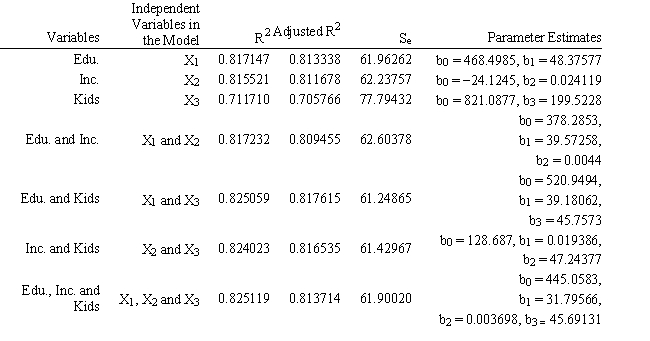Exhibit 9.4
The following questions are based on the problem description and spreadsheet below.
A charitable organization wants to determine what type of people donate to charities like itself. The charity felt that a person's education (in years), annual income, ($1,000) and the number of children the person had were important variables to consider. The charity developed regression models for all of the possible combinations of these three variables but does not know what to do with the results. 
-Refer to Exhibit 9.4. Based on the data in the table which is the best model for the charity to use? Explain which values you used to reach your conclusion.
Definitions:
Theft Deterrent
A security measure or device designed to prevent theft or unauthorized access to valuable assets or information.
Mobile Devices
Portable electronic devices like smartphones and tablets that can perform various computing tasks and connect to the internet.
Computer Forensics
The practice of collecting, analyzing, and reporting on digital data in a way that is legally admissible, often in relation to computer crime.
Extracting
The process of retrieving data or information from a larger dataset or source.
Q11: Refer to Exhibit 6.1. What values would
Q15: <br>A common application of Monte Carlo simulation
Q16: A simulation model was replicated 100 times
Q22: Refer to Exhibit 14.5. What is the
Q32: The critical path in PERT analysis is
Q35: As the number of periods in the
Q40: Robert Hope received a welcome surprise in
Q43: Refer to Exhibit 14.11. What is P(<img
Q50: Refer to Exhibit 13.7. Based on this
Q50: You have been given the following linear